5 Simple Factory Floor Installations to Improve Safety
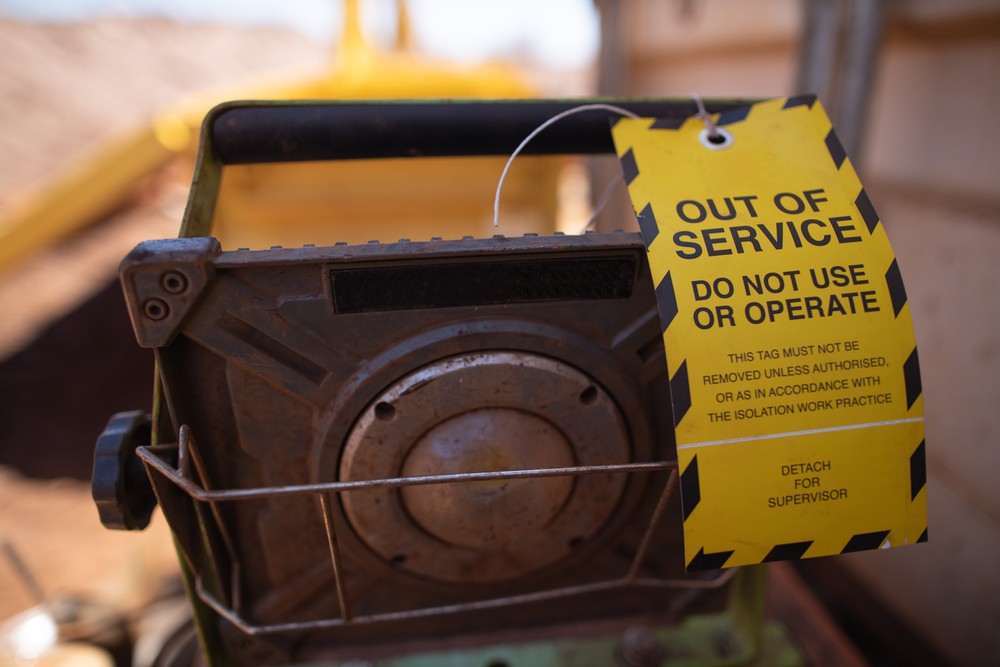
No matter what type of production facility you operate, safety is paramount. Promoting a safe work environment begins with training and adherence to safe practices. But simple additions on your factory floor can go a long way toward improving safety for workers who may be unaware or inattentive during moments of focus. A few simple safety installations could be life-saving.
These five simple factory floor installations improve safety and further awareness during everyday operations. They may be simple, but there’s a reason they’re used in virtually every factory in the world to promote safety standards: They work.
1. Safety signage
Signage is an excellent form of visual communication. It helps employees easily identify possible dangers around them and serves as a constant reminder of safety habits. In fact, safety signage is a core focus of OSHA standards and one of the simplest ways to avoid fines and penalties.
Examples of effective safety signs include those for specific hazards (e.g., Warning: Biohazard), accident potential (e.g., Watch Your Step), and equipment safety (e.g., Keep Hands Clear). It’s especially important for factories to implement proper signage when dealing with hazardous materials and high electricity.
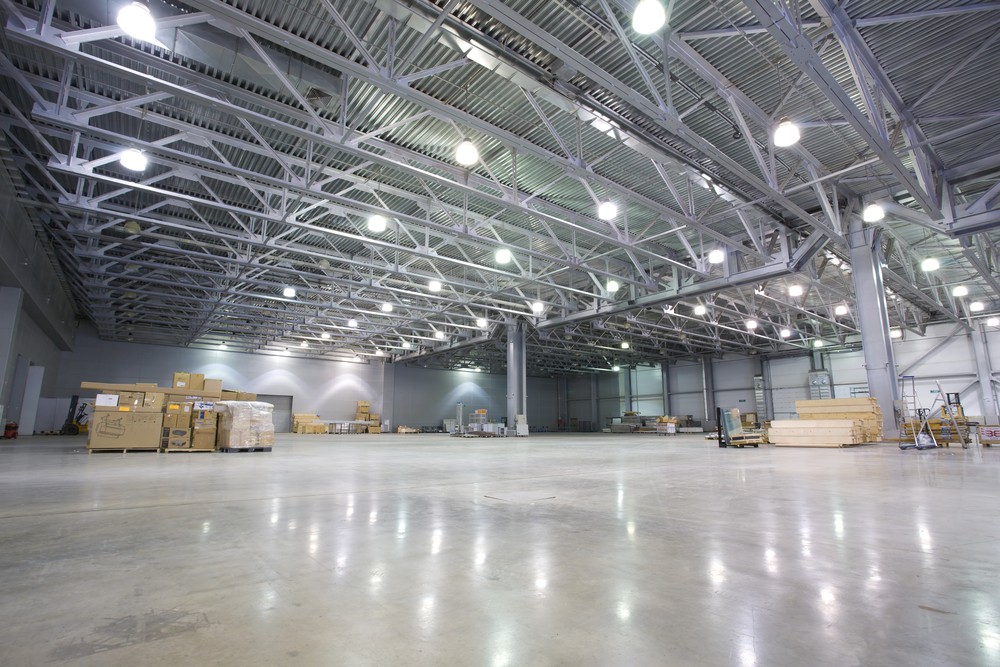
2. Lighting
Good lighting is critical in every area of a factory. It helps employees identify possible obstructions and hazards and makes identifying safety markers and signage much easier. Lighting also extends to alert lighting, such as flashing lights or color-coded lighting to indicate different active hazards. These types of lighting alerts are indispensable in factories with hearing protection mandates.
Most experts recommend upgrading to high-efficiency industrial-grade LED fixtures for increased visibility over fluorescent lighting. For colored or flashing lights, be sure to train employees regarding their meaning and the appropriate reaction to these visual alerts.
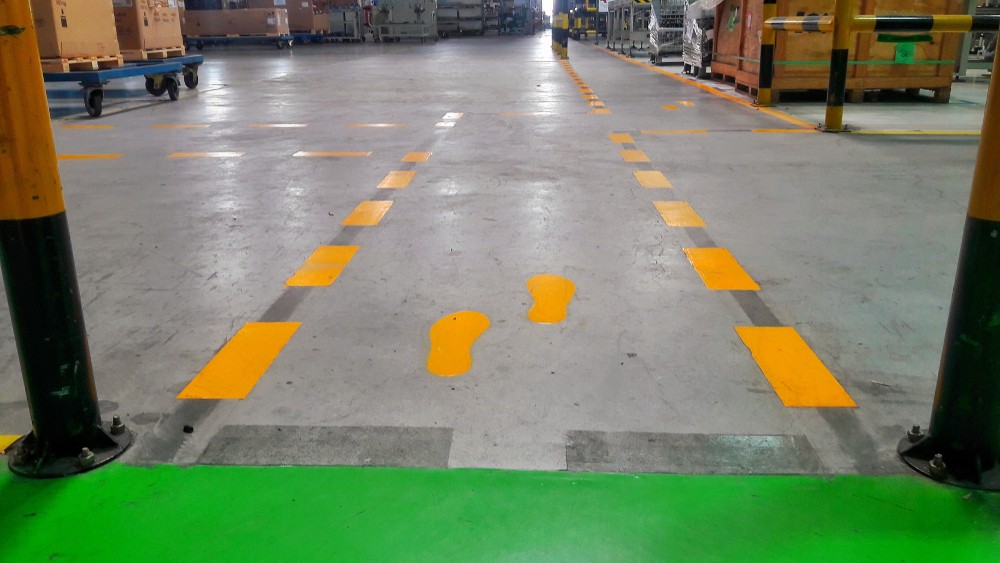
3. Floor markings
Floor markings help employees stay out of dangerous areas and keep them apprised of what’s happening within a given area of the factory. From loading zone markings to perimeter markings around equipment, floor striping can be as effective as eye-level signage for informing employees about potential safety hazards in the workplace.
Consider all the places within the factory requiring delineation. Markings include designations for electrical outlets, ramps, loading docks, control panels, and much more. Use tape for temporary markings and fluorescent paint for permanent marking and striping. Be sure to follow OSHA marking standards.
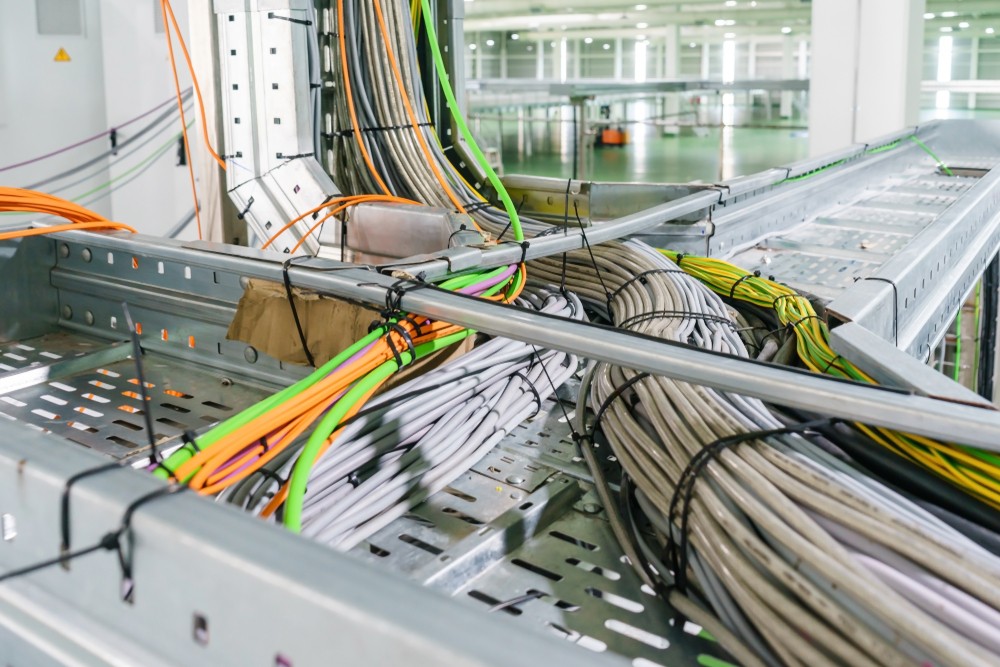
4. Cable raceways
Cable raceways offer a safe and effective way to manage cables running along the factory floor. Whether for equipment and machinery, or as part of maintenance and repair, cabling poses a trip hazard when not properly contained. Raceways are inexpensive and prevent free cables and wires from creating a tripping hazard. Exposed cables are also a fire safety issue. Installing cable raceways can increase the longevity of cables and improve floor safety in active areas.
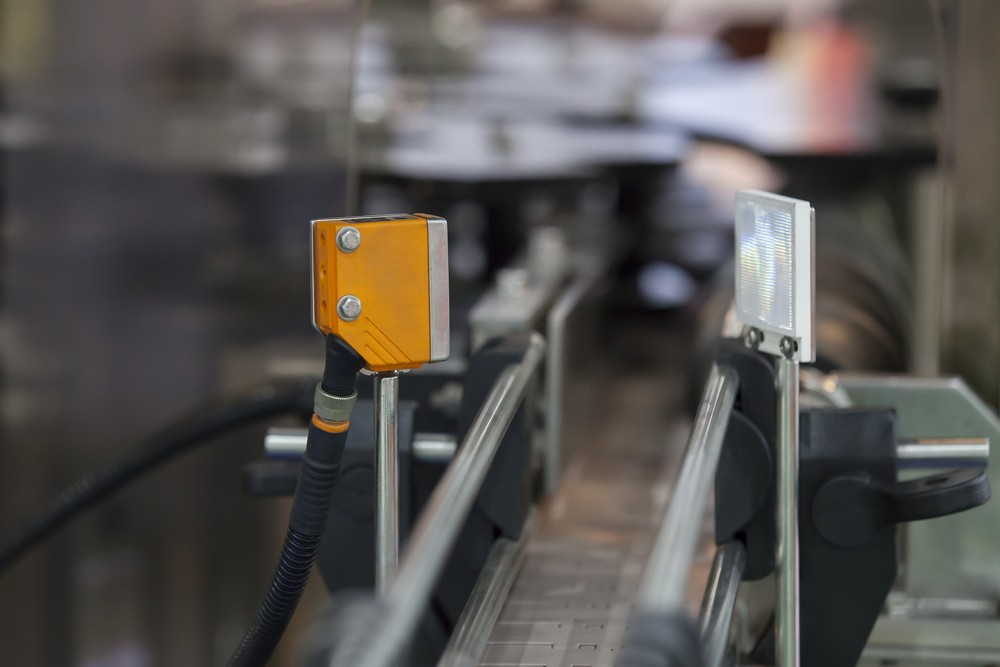
5. Sensors
Smart sensors are an increasingly important part of the modern factory. Coupled with access control — which maintains restricted areas and safety boundaries — sensors automate safety within factories. They alert employees to broken machinery and even stop equipment if a fault is detected. Sensors also provide accurate data reports for improving the efficacy of maintenance and repair operations and prevent hazards from developing.
Why Is Factory Safety So Important?
Employee safety should be a main priority of any manufacturing company. While safety training is essential, it’s also important to improve floor safety in any way possible. This means investing in proven safety equipment and floor installations, including sensors, cable raceways, signage, and lighting, and more.